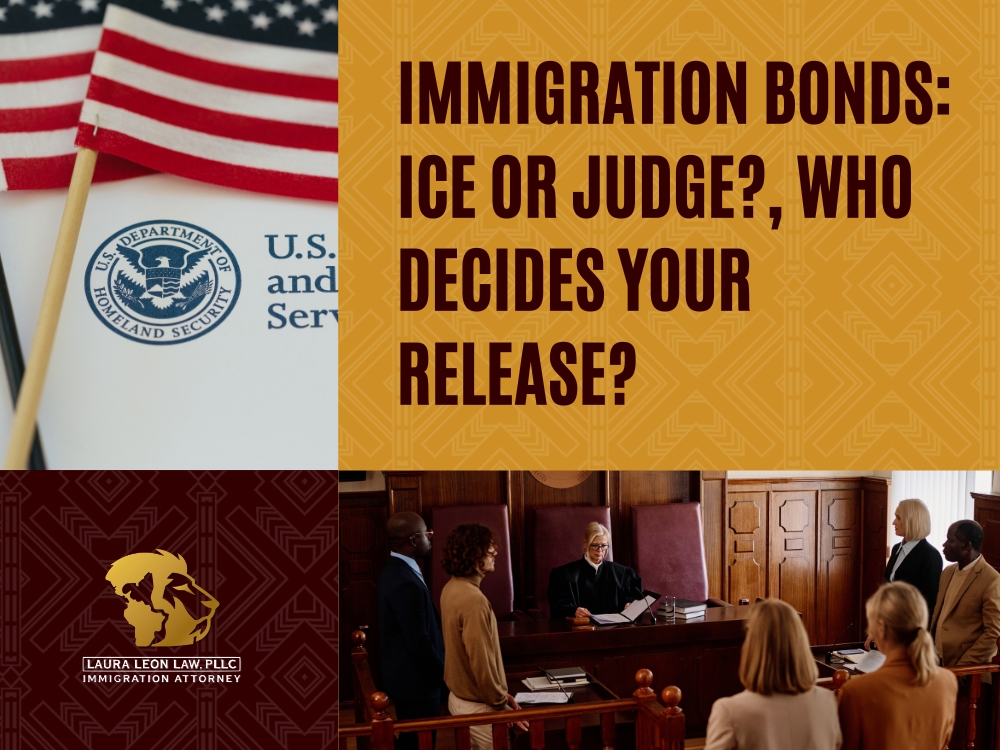Tens of thousands of immigrants spend months, sometimes years, in ICE detention while waiting for their deportation or removal hearings. Immigration bonds are the key to securing release from ICE custody.
At Laura Leon Law, we can help you understand how immigration bonds work, who qualifies for them, and how the process works in the immigration court system. This guide breaks it all down to help you better understand your options and next steps.
Immigration bonds are a sum of money paid to the U.S. government to secure the release of someone detained by Immigration and Customs Enforcement (ICE).
Once paid, the detainee (noncitizen) can live outside custody if they meet all court-ordered conditions, including attending every court hearing. If you meet your obligations, the bond is refunded after the case concludes.
Sometimes, ICE sets a bond amount without requiring a court hearing. A U.S. citizen or a green card holder can pay this bond on behalf of the detainee. Once paid:
If ICE does not set a bond amount or denies release, a detainee can request a bond hearing with the immigration court. This process often requires legal representation to present a strong case for release. Getting a hearing for immigration bonds can be the first step toward normalcy if you or a loved one is in this situation.

Eligibility to have a hearing for immigration bonds depends on factors like legal status, immigration violation history, or criminal records. To qualify, one of the following must apply to the detainee:
Not everyone in detention qualifies. Some individuals are subject to “mandatory detention,” meaning they cannot pay immigration bonds for their release due to their criminal records, prior deportation orders, or illegal reentry.
In hearings for immigration bonds, the judge evaluates multiple factors to determine whether the detainee should be released (and at what bond amount). The most common considerations include:
Here’s what often persuades judges to grant an ICE release:
Approval can become more difficult without robust evidence. We highly recommend that you seek an experienced attorney for immigration bonds and gather compelling evidence for your release.
At the bond hearing, the immigration judge listens to arguments from your attorney and ICE officials to decide:
The judge may approve the release and set a bond amount or deny the bond if mandatory detention applies.
When a judge grants immigration bonds, the obligor (the person paying the bond) must post a bond with the U.S. Department of Homeland Security (DHS) for the detainee’s release.

Once a bond is approved, here’s what happens:
Failure to meet these responsibilities can result in bond forfeiture and further legal complications—including deportation.
DETAINED BY ICE?
Being in ICE detention can be a frightening and lonely experience. At Laura Leon Law, we help clients nationwide and focus on securing their release from ICE custody as quickly and effectively as possible.
Let us guide you through the process, protecting your rights every step of the way. You may request a free consultation to discuss your case and learn your options.

